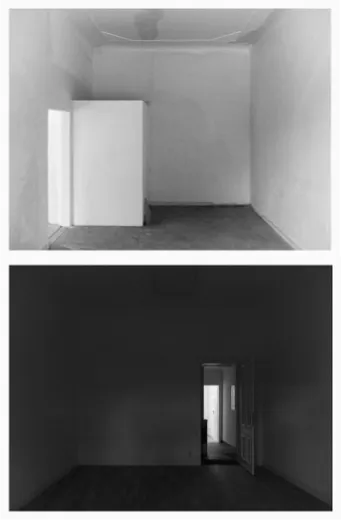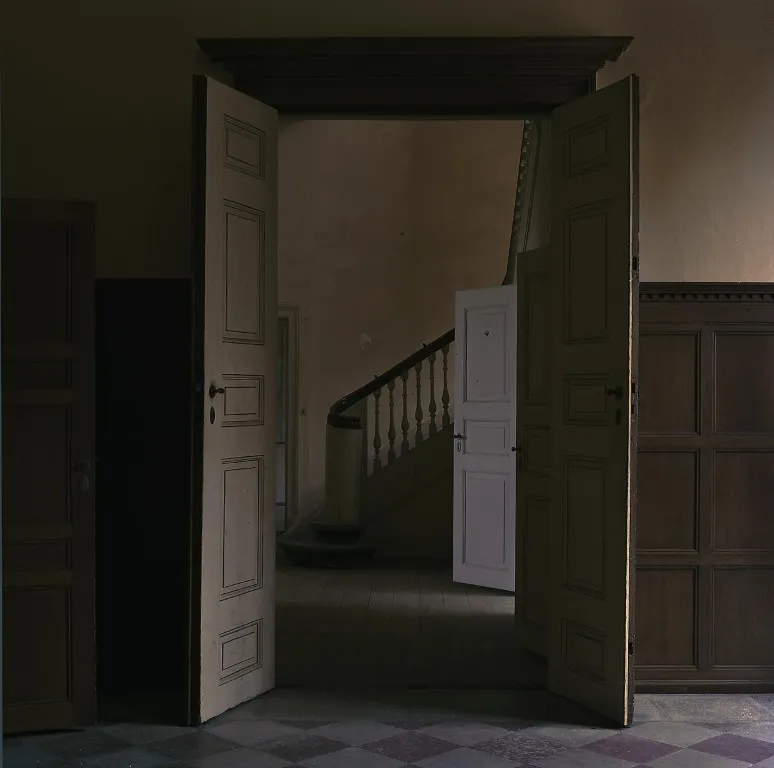If the Walls Could Talk...
Bare Interiors and the Echo of Memory in Photography

From Candida Höfer to Daisuke Yokota
Photography often brushes against memory—not just as a record of what was, but as a way of sensing what lingers, what has faded, and what remains unsaid. Nowhere is this felt more sharply than in photographs of interiors devoid of people. These spaces—quiet, empty, sometimes decaying—are not neutral. They are charged with presence through absence. Across a spectrum of approaches, from the architectural clarity of Candida Höfer to the abstract erosion of Daisuke Yokota, the bare interior becomes a vessel for memory: structured, fractured, imagined, or lost.
Candida Höfer’s interiors are pristine and monumental. Her photographs of libraries, museums, and theatres depict order and tradition. The absence of people does not render the spaces lifeless—instead, it emphasizes the weight of history and the ritual of public life. These images function almost archivally, as visual catalogs of collective memory held within institutional walls.
In contrast, Daisuke Yokota engages memory through erasure and instability. His interiors are abstract, degraded, and ghostly, achieved through chemical manipulation and repeated printing. These photographs don’t document space—they dissolve it. Memory here is fragile, unreliable, sensory. The interior becomes a mental space: ungraspable, emotional, dreamlike.
Between these poles lies a wide array of photographers who interpret space and memory in richly varied ways. Trine Søndergard, for instance, brings a quietly feminine and meditative tone to her interiors. Her Interior series—capturing sparse, historic rooms in Danish buildings—emphasizes light, texture, and restraint. These images feel like hushed moments where time has paused, echoing with domestic histories and private memory.
Laurens Berges focuses on spaces in transition, often in post-reunification East Germany. His images of empty, deteriorating buildings carry a quiet dignity—walls flaking, floors worn—charged with the residue of lives once lived. There’s a deep melancholia in his work, where interiors become elegies to time and change.
Axel Hütte, like Höfer, comes from the Düsseldorf School but takes a more ambiguous approach. His interiors, though formal and often grand, have a cool, detached atmosphere. They resist emotional immediacy, inviting the viewer to bring their own interpretive memory to the image. There’s a sense of space as stage—poised, silent, waiting.
Hiroshi Sugimoto’s photographs of movie theaters collapse entire films into a single exposure, transforming the cinema interior into a glowing void. These works are ghostly and conceptual—literal containers of memory flattened into light. His seascapes also parallel this logic: memory and time distilled into minimalist form.
Thomas Demand constructs paper replicas of familiar or significant interiors, then photographs them. The result is uncannily lifelike but emotionally hollow. These interiors are pure simulation, suggesting memory as fabrication—convincing, yet fragile and unstable.
Todd Hido brings a more emotional register, photographing domestic spaces with a cinematic sense of unease. His interiors are dimly lit, soft-focused, often damp with nostalgia or tension. Memory here is deeply felt, rooted in longing and loss, less about history than mood.
Mårten Lange offers a minimalist counterpoint. His interiors—when he turns to them—are stark, distant, and clinical. They suggest surveillance, detachment, and the elusiveness of memory in the digital or institutional age. Lange works at the edge of visibility, hinting at what escapes the frame.
Finally, Rachel Whiteread, known for casting the negative spaces of everyday architecture, contributes materially to the theme. Her photographic documentation of these castings turns absence into object, void into memory. When photographed, these works embody a double transformation—space into memory, memory into image.
Together, these artists—through clarity, decay, reconstruction, and abstraction—reveal that the bare interior is never truly empty. It is a site of accumulation: of time, of feeling, of erasure. Whether institutional, domestic, or anonymous, these spaces echo with what once was, and what we try—visually, emotionally, conceptually—to hold onto. In the hands of these photographers, memory is not just something depicted; it’s something spatial, spectral, and alive in the image itself.
Documenting Bare Interiors
Artists Candida Höfer, Todd Hido, Uta Barth, Hiroshi Sugimoto, Trine Søndergard, Daisuke Yokota are among the top artists having sureveyed the them of bare interiors and their meaning.






%2520Edition%2520of%25201000.webp)

%2520MOCA%2520Ltd%2520Edition%2520with%2520Catalog%25201996-2002%2520Ed45.webp)
















